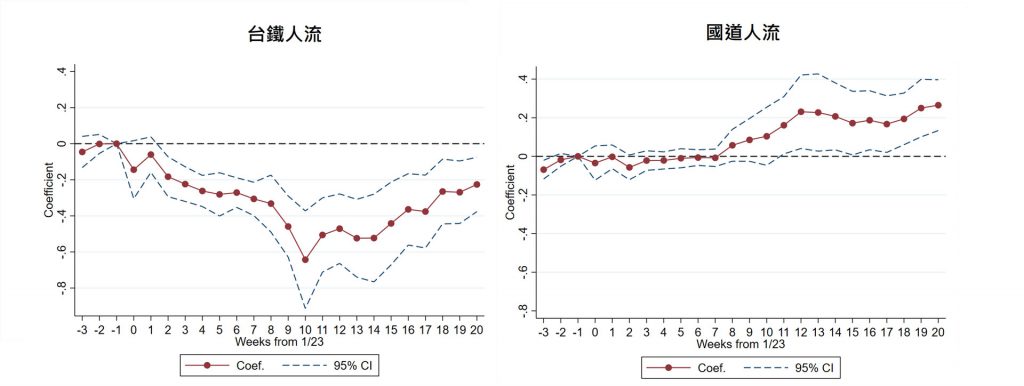Using traffic data from Taiwan in 2020, a research team from the Institute of Economics, Academia Sinica, and the Department of Economics, National Taiwan University, quantified how the COVID-19 outbreak affected demand for public and private transportation. Despite there being no governmental restrictions, substantial shifts in travel modes were observed. During the peak of the pandemic in Taiwan within the study period (mid-March 2020), railway ridership declined by 40% to 60%, while highway traffic volume increased by 20%. Furthermore, railway ridership was well below pre-pandemic levels, though there were no locally transmitted cases in the eight-month period from mid-April to December. These changes in traffic patterns had implications for spatial patterns of economic activity: retail sales and nighttime luminosity data show that during the pandemic, economic activity shifted away from areas in the vicinity of major railway stations.
This research team consisted of Distinguished Research Fellow Kong-Pin Chen, Associate Research Fellow Tzu-Ting Yang at the Institute of Economics, Academia Sinica, and Associate Professor Jui-Chung Yang at the Department of Economics, National Taiwan University. This study was published in Journal of Urban Economics.
Article link:https://www.sciencedirect.com/science/article/pii/S0094119022000031
Abstract:https://www.econ.sinica.edu.tw/4d49b1b1-d551-4956-84a5-6bbf392d8417/posts/5204

